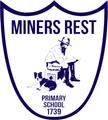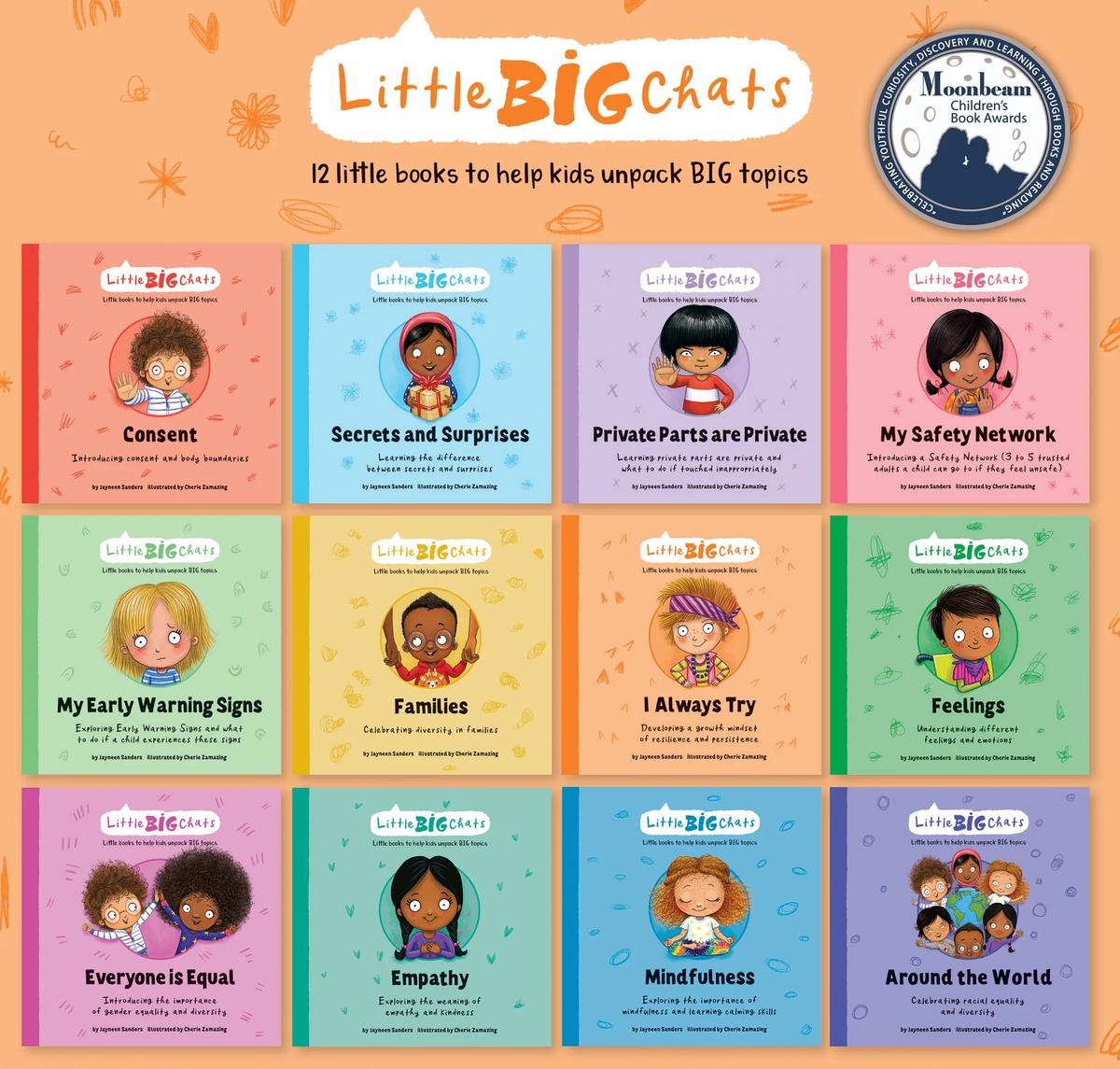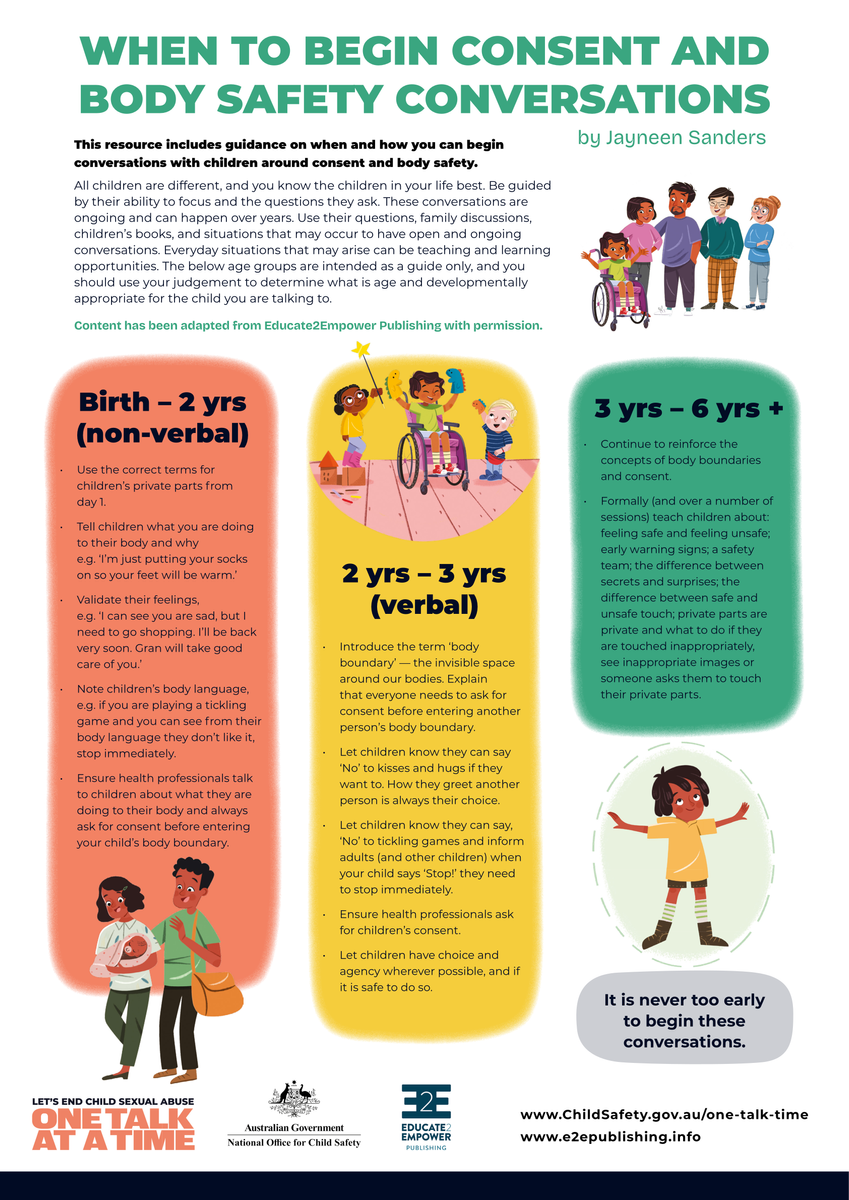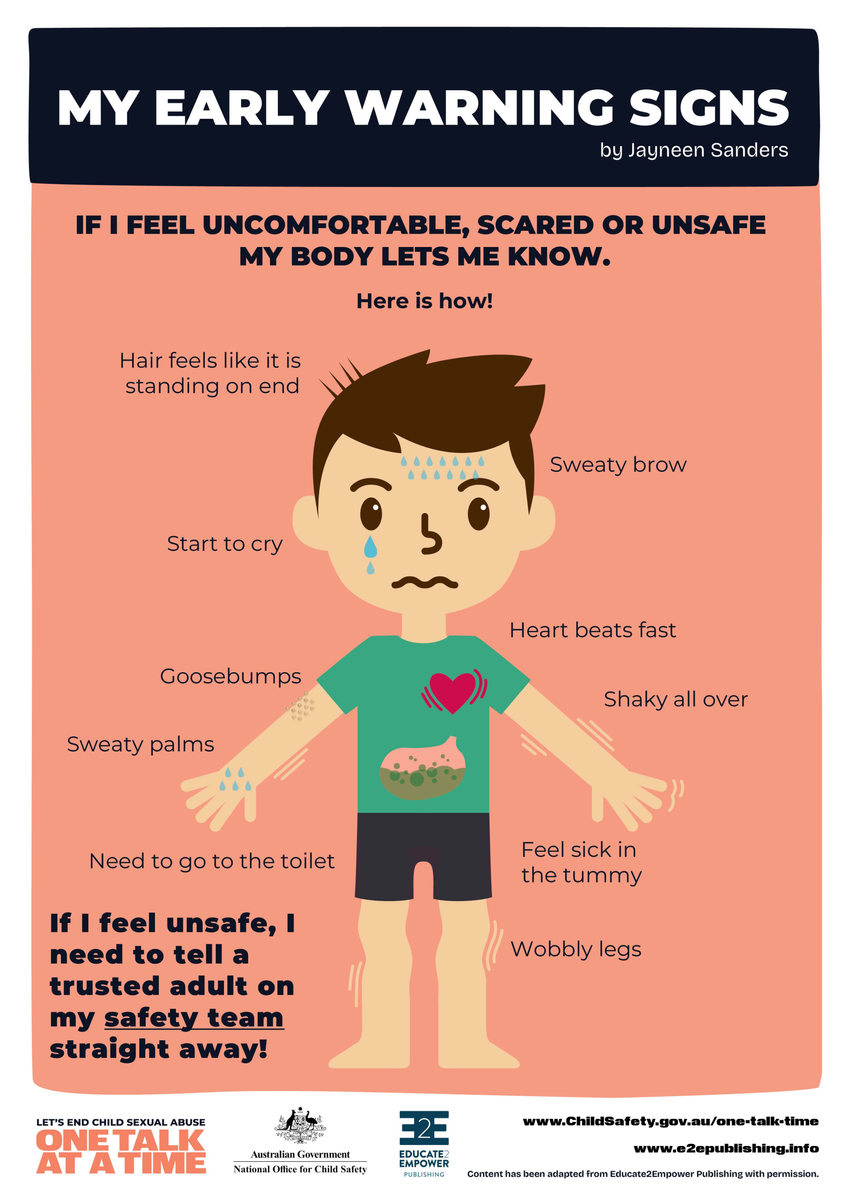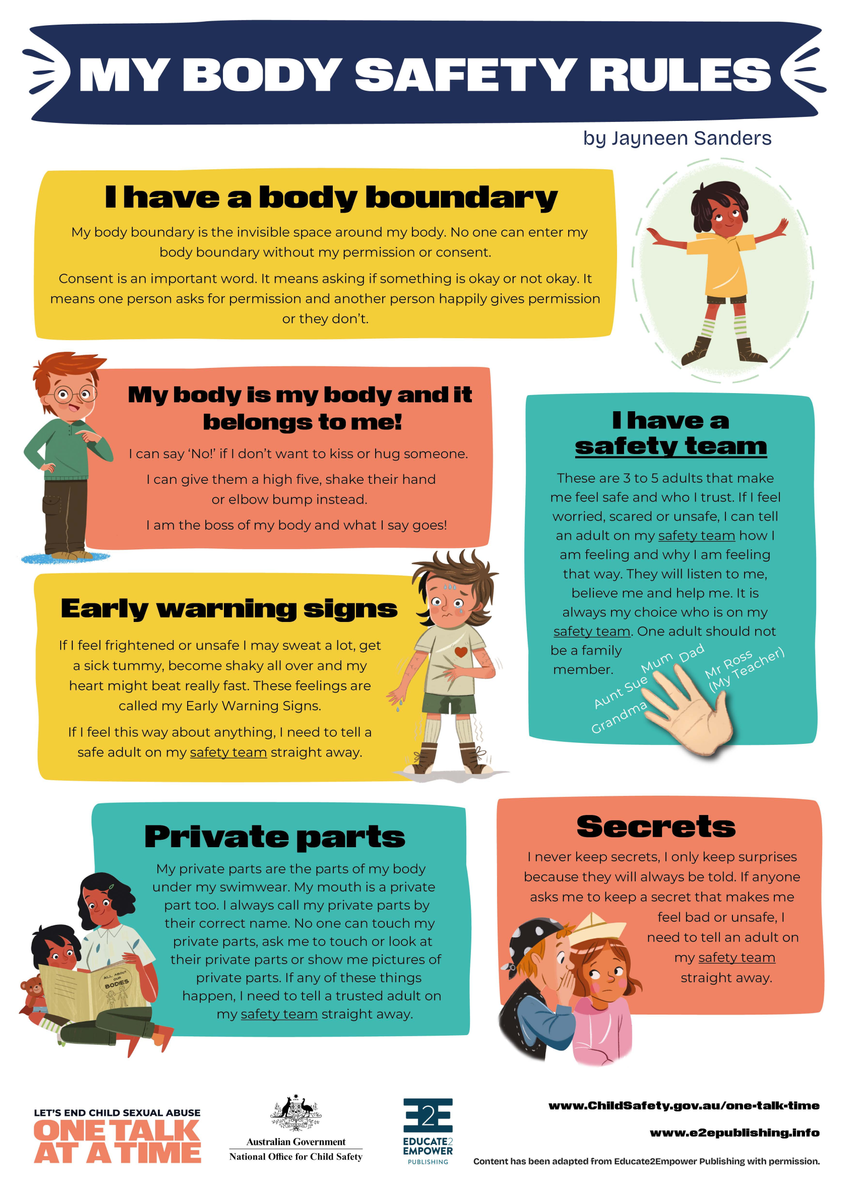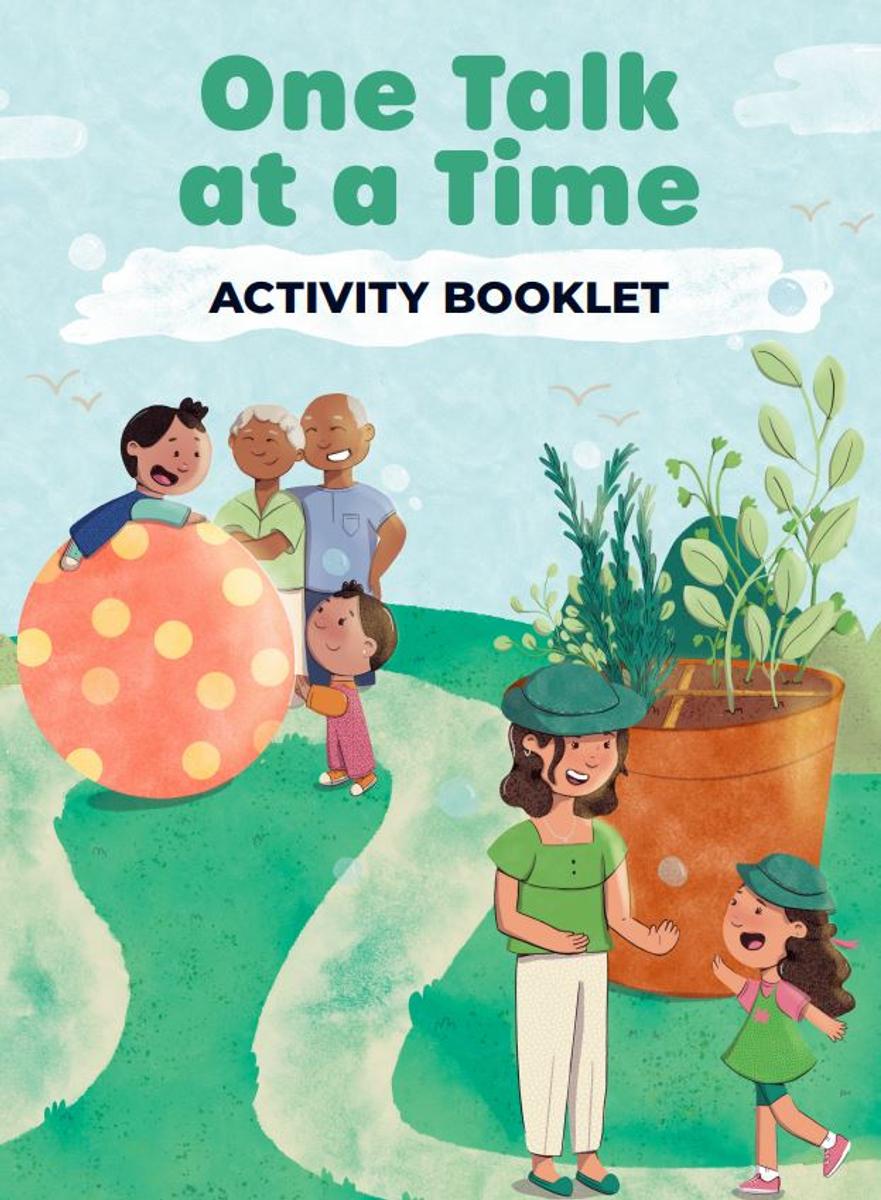Inclusion & Engagement
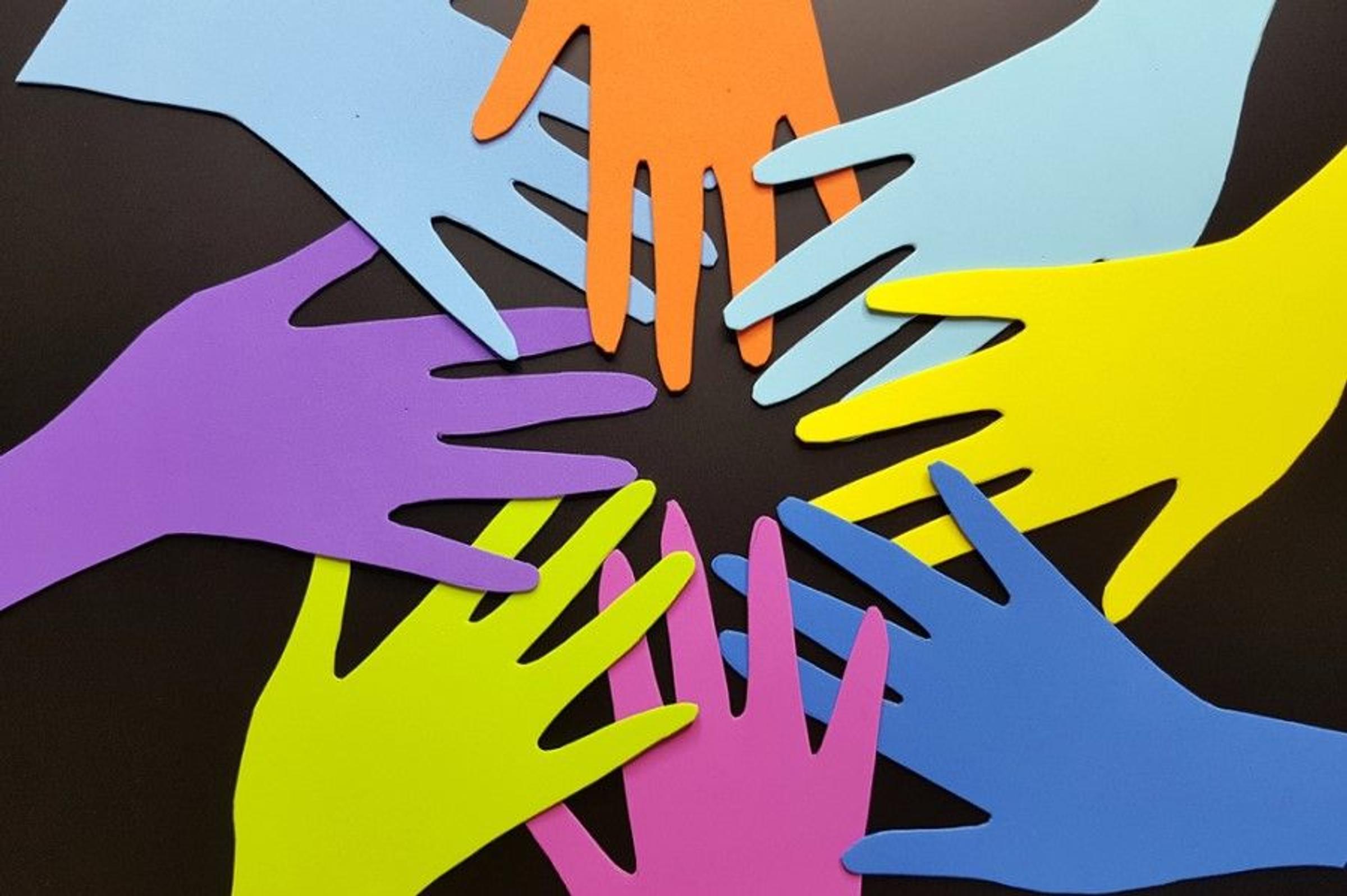
Teaching Body Safety and Consent
Teaching children and young people about body safety is an important part of keeping them safe from child sexual abuse. It can be hard to know how to start these conversations, so below are some resources that may be helpful.
To support adults to have conversations with children and young people about body safety, Child Safety have partnered with Jayneen Sanders, author and publisher at Educate2Empower Publishing on readings of five books from her Little BIG Chats series.
These Little BIG Chats books have been written to help adults have open and age-appropriate conversations with children and young people about body safety.
You and the children in your life can watch Jayneen reading the books below.
https://www.childsafety.gov.au/storybook/little-big-chats-readings
Books are a great way to start these conversations, below are a list of suggestions:
- Everyone’s got a bottom by Tess Rowley
- My body belongs to me by Jill Starishevsky and Angela Padron
- Some secrets should never be kept by Jayneen Sanders and Craig Smith
- Let’s talk about body boundaries, consent & respect by Jayneen Sanders and Sarah Jennings
- Someone should have told me by Holly-ann Martin and Marilyn Fahie
- My underpants rule! by Kate and Rod Power
- No difference between us by Jayneen Sanders
- Milly’s Message by Liz Walker
- My Body is Private by Linda Walvoord Girard.
My Say, My Way
My Say, My Way is a storybook designed to help teach First Nations kids about body safety. It follows cousins Billy and Bindy as they learn about their bodies, boundary setting, consent, and safe and unsafe touch.
The back of the book has guidance for adults to help them explain some of the words used in the storybook.
This storybook is part of the ‘My Say, My Way’ resources that were co-created with First Nations men and women, mothers, fathers, sisters, Aunties, Uncles, and Elders from across Australia.
One Talk at a Time
The attached activity booklet has been developed to help adults identify everyday opportunities they can use to have open conversations with children and young people to keep them safe from child sexual abuse. Ongoing, age-appropriate conversations send the message to children and young people that they can talk to you, and you will listen, no matter what.
You can talk to children and young people about sexual abuse as part of conversations about bodies, relationships, respect, boundaries, consent and online safety. It’s important to talk about saying ‘no’, physical warning signs, inappropriate touching, and the difference between ‘secrets’ and ‘surprises’.
It can feel challenging and uncomfortable to discuss child sexual abuse, but doing so is important, and can be an age-appropriate and positive experience. Having conversations at times and in settings which are part of a regular day can help to normalise talking about the topic and make children and young people feel safe and comfortable to raise questions and concerns.
This booklet includes a selection of fun, everyday activities that are accompanied by conversation prompts to help you start these conversations. You can print it out or keep it on hand as a digital version.
Further resources, tips and information can be found at:
